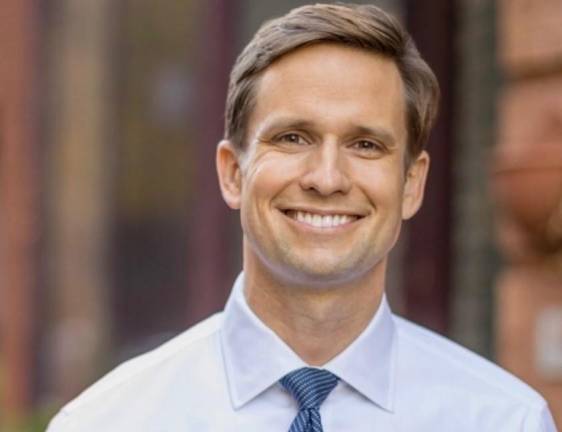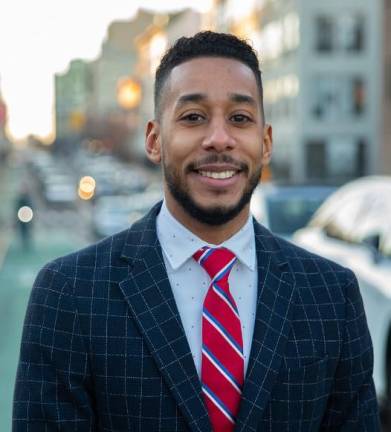Crisis Looming: With Only 8,000 New Housing Starts Last Yr, Politicos Seek Residential Push
City council member Eric Botcher is teaming with Brooklyn borough president Antonio Reynoso to form a new Housing League to push for renewal of tax incentives as one way to jump start moribund residential construction market. The city saw only 8,000 new housing applications last year. The housing crisis will worsen without immediate action, they said.


The solution to the Great City’s acute housing shortage seems, at one level, obvious. Build more housing.
But since real estate is to New York more or less what oil is to West Texas, financial interests get complicated, fast. Builders want subsidies (or incentives, if you prefer). Tenants want protections. Progressives say wealthy foreigners should be barred from warehousing apartments. Conservatives say rent controls limit supply more than price.
The net result of all these competing views was gridlock last year, and the collapse of Governor Kathy Hochul’s plan to encourage more housing development. Enter Erik Bottcher, council member from Midtown, Chelsea and The Village, and Antonio Reynoso, the Borough President of Brooklyn, who announced that they are forming a “Housing League” of legislators and other officials to stiffen everybody’s spine to make a deal on a plan for more housing before the shortage cripples the city’s economic prospects.
“More momentum for new housing in New York City,” Governor Hochul enthused on X, the former twitter, “thanks to @BKBPReynoso and @CMErikBottcher. Let them build!”
Reynoso, as presented by the New York Times, seemed to stress the need to overcome neighborhood political resistance to development, the so called “Not in My Backyard” challenge.
“We do not want you if you’re just a straight NIMBY,” the paper quoted Reynoso, who was elected to office with the strong support of the left-wing Working Families Party.
But Bottcher offered a different emphasis. He said many neighborhoods fear that development will produce gentrification when, in fact, he said, it is the shortage of housing that is driving up housing costs and producing gentrification.
“There is a conception among not just many lawmakers but among much of the public that new housing is the primary driver of gentrification,” Bottcher explained. “The truth is that the lack of housing is the primary driver of gentrification. Because people are going to continue moving to New York and they’re going to continue moving here in large numbers. Unless we create housing for all, the wealthy are going to take the apartments of people who are not wealthy. That’s the education that we need to do and the organizing that we need to do.”
Bottcher said another name for the League would be a housing “caucus of elected officials, city and state, who work together and find strength in numbers to achieve policy goals.”
The group’s full agenda and positions will be hashed out at an upcoming meeting at Brooklyn Borough Hall.
But he said one clear necessity would be the creation of a new tax incentive program to replace the lapsed 421-A program to encourage housing construction.
“Which, as it turns out, is one of the only ways that building a rental property in New York is financially viable.”
He noted that since 421-a lapsed last year and the governor’s effort to renew it failed, only 8,000 new units of housing were applied for in New York City. “If that happens again we are in even more serious trouble as a city,” Bottcher said.
The idea for the housing caucus grew out of a Christmas season get together between Botcher and Reynoso. “We got together to catch up in December and were both lamenting the lack of a coalition of elected officials to spur action on housing creation.” Botthcher said. “It came out of that discussion.”
Others have already started to rally to the group, including Mark Levine, the Manhattan Borough President.
“There is growing consensus that housing affordability is an existential challenge for New York City,” Levine said. “But implementing solutions to the crisis will take political courage. We need elected leaders who are committed to this fight to come together to support each other, to strategize, and to lock arms as we take on tough policy fights to create the housing our city needs.”
Bottcher said one of the group’s roles could be “education and dissemination of data and research that shows that increased housing supply is one of the only things that stabilizes rents across the board for all.”
Whether by design or coincidence, Mayor Eric Adams and Speaker Adrienne Adams, who haven’t seen eye-to-eye on a number of issues recently, coauthored an op-ed in the Daily News raising many of the same issues as Bottcher and Reynoso.
They noted that the latest survey by the Department of Housing Preservation and Development found a citywide vacancy rate for rental apartments of 1.4 percent, the lowest since 1968. “As New Yorkers, we can no longer afford to reject new housing,” they wrote, “especially in communities that have the most access to resources and infrastructure.”
The Mayor and Speaker, both from the black middle class neighborhoods of southeastern Queens, said the affordability crisis was sparking a “mass exodus” of black New Yorkers. They called for a new tax incentive program for developers, coupled to tenant protections and zoning changes to expand both new housing construction and the conversion of offices to apartments.
“At a very basic level,” Bottcher said, “New York City and New York state have failed to permit enough housing to keep pace with population growth. You can draw a straight line from that to the dramatic rent increases that our constituents are seeing.”
“City and state governments have failed to address this crisis,” Bottcher added. “And it requires elected officials standing up and demanding action. We also need to give a voice to the elected officials among us who believe that one of the fundamental ways to make New York City and New york state affordable is by dramatically increasing the supply of housing, as called for by every housing expert not just in New York City but around the world.”